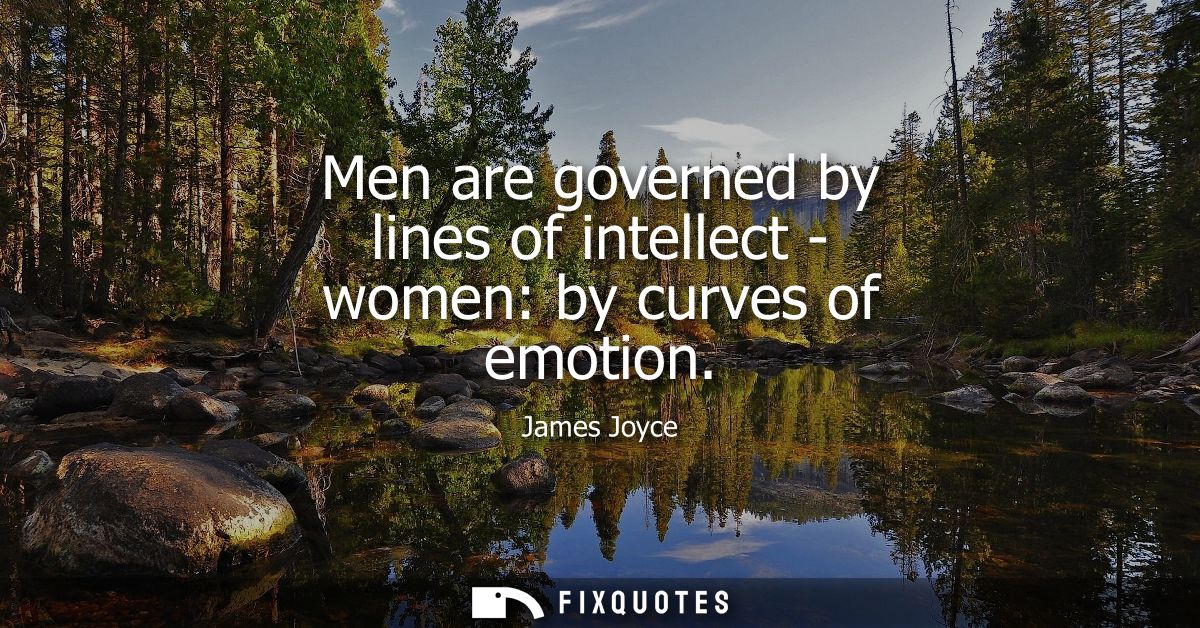"Men are governed by lines of intellect - women: by curves of emotion"
About this Quote
James Joyce’s assertion that “Men are governed by lines of intellect, women: by curves of emotion” reflects enduring cultural conceptions about gender and the ways people process the world. The metaphor of “lines of intellect” suggests directness, linearity, and perhaps rigidity, evoking images of logic, reasoning, and structured thinking. In contrast, “curves of emotion” indicates fluidity, indirectness, and adaptability, representing emotional intelligence, intuition, and a responsiveness to the nuances of feeling.
Joyce’s language draws strongly on visual imagery. Lines are straight, predictable, and distinctly mapped; curves meander, twist, and invite mystery. By associating men with lines, Joyce signals a traditional belief that men rely on reason and rational processes, approaching problems with a kind of analytic clarity. Women, linked with curves, are seen as more likely to navigate life through emotional landscapes, making decisions that arise from empathy, compassion, or instinct rather than systematic logic.
Yet embedded in this dichotomy is both an observation and a question. Joyce’s words summarise a long history of gender stereotypes, but his literary work often complicates these very divides, inviting readers to consider the blurred boundaries between intellect and emotion. The image of the curve does not necessarily denote weakness or irrationality, it also carries associations of creativity, change, and the ability to respond flexibly to experience. Lines may suggest forcefulness and purpose, but they can also imply stubbornness or an inability to adjust.
Joyce’s aphorism thus invites reflection on whether intellect and emotion are truly opposed, or inseparably intertwined. Human experience rarely conforms neatly to such binaries; minds and hearts act in concert, regardless of gender. The power of the statement lies in its poetic condensation of complex truths and its provocation, challenging us to see how culture, identity, intellect, and emotion shape our understanding of ourselves and others.
About the Author

